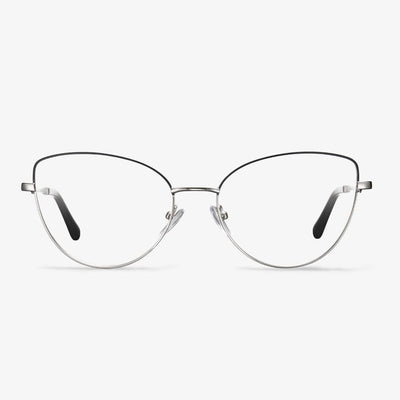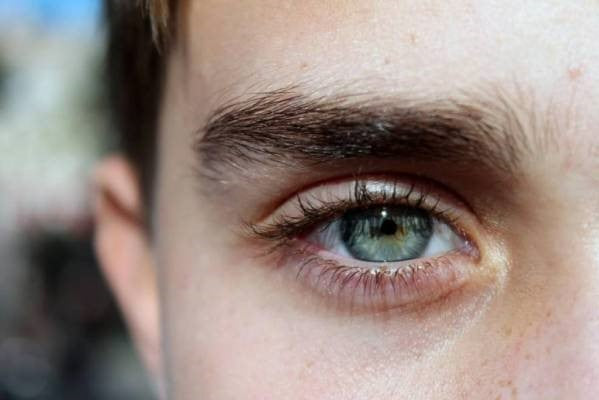5 Signs You Need Reading Glasses
In this section, we will list some signs you need reading glasses.
- You are over 40 years old. Everyone’s eyesight changes at a different rate, but most people develop presbyopia in their 40s. Presbyopia is a condition in which the eye strain to focus on nearby objects, which is different from farsightedness, a condition in which you can see distant objects clearly, but objects nearby may be blurry. Farsightedness is usually present at birth, but presbyopia develops during the aging process.
- If you find that you never seem to have enough light when reading, regardless of the room type or the number of lamps you have turned on, it may be time to get reading glasses. According to a study, a 60-year-old people requires three times as much light as a 20-year old to do the same task.
- If your eyes get tired when reading or working at your computer, you may need reading glasses. Do you find yourself dozing off at your computer, or do your eyelids get heavy when your reading or do detailed work? If so, you may be developing presbyopia, and you may need the reading glasses.
- Another sign you need reading glasses is that you are getting more headaches. Consistently straining your eyes to read or focus on craft could give more headaches. A headache right behind your eyes could be indicative of hyperopia. It is important to remember the 20-20-20 rule: every 20 minutes, look at something at least 20 feet away for 20 seconds. If your headaches persist, you should see an eye doctor and have a check.
- If you see halos, you may need reading glasses. When your lens cannot focus light into your retina, it makes your vision appear blurry. Thus, reading glasses can solve this problem.
Do I need reading glasses? After reading this post, you may have a basic understanding. If you need a pair of reading glasses, try Koalaeye glasses. They are stylish and cheap, and the glasses will be mailed to you with great convenience.
Transition Lenses Problems
It is not convenient to rely on photochromic lenses when driving. It also may be unsafe if the driver depends on the prescription to see or is legally bound to wear prescription lenses when driving.
Besides, transition lenses are typically the size and shape of regular vision-correction lenses, which allows them to accurately correct the field of vision, but does not account for peripheral areas on either side of the visible range. Sunglasses operate by maintaining very dark glasses that expand over the field of vision and the peripheral with large, oblong lenses that block sunlight from both the front and sides. However, transition lenses are not typically dark enough for heavy sun and cannot block light penetration on the peripheral, leading to people having to resort to sunglasses again.
Of course, there are some benefits of transition lenses and you can click here to learn more.
Can clear lenses be polarized?
At present, there are no clear polarized lenses. A polarized lens is a thin film vertically arranged with silicon crystal coating placed inside the lens, just like a shutter, which covers the parallel light and only allows the vertical light to pass through. In this way, the glare from all directions can be eliminated, so it is clear and comfortable to wear. Transparent polyamide, the material of nylon lens, is a new variety of polyamide. The material of the nylon lens is mainly transparent polyamide. Due to the effect of the light filter, only light from a specific direction is allowed to pass through the lens, which filters the dazzling light from the sun on the water, land, or snow very well. It can not only make the landscape soft, clear, and natural but protect the eyes to a certain extent.
How to Get Used to Progressive Lenses?
It is common that your vision may change when you are over age 40. You can find it is happening when have to hold your favorite book, the daily newspaper, or a restaurant menu farther away just to read it. This is an eye condition called presbyopia. It is normal and almost all of us get it as we reach middle age.
This eye condition often can be corrected by progressive lenses which allow you to see objects from far to near clearly. With progressive lenses, you do not have to switch your glasses to see far or near objects frequently.
However, since progressive glasses have three different prescriptions in one lens, it may be difficult for some people to adapt to the new ones. So, in this post, we will show you how to get used to progressive lenses.
Select the lens.
The choice of lenses is one of the matters to note with glasses. Teenagers are active and often do sports. They can choose resin lenses, which are light, durable, and not broken. For some adolescents with complex refractive conditions, it is best to customize the lens in the case of the need for custom lenses, to get the perfect pair of glasses. Choose the refractive index that is right for you. The thickness of the edges of the lens is related to the size and shape of the frames in addition to the refractive index. The original state of the myopic lens is a circle that is thin in the middle and thick around, and then it is ground into the shape that suits the lens frame. If the thinnest center is relatively far from the edge of your frame, that is, if that frame is large, the edge of the lens will be thicker.
What is night blindness?
Diminished night vision can also be called night blindness. When you suffer from night blindness, it does not mean that you can't see anything at all at night. This means that you have difficulty driving or seeing things in dark or dim lighting conditions. Night blindness also makes it difficult for the eyes to change from bright light to dim light. This is why night driving in oncoming vehicles can be challenging for some people with night blindness.
Many people have experienced a condition called night blindness, which can make driving at night difficult. Driving glasses at night should help alleviate this situation. However, research shows that night driving glasses are generally ineffective.
If you encounter problems while driving at night, please make sure that all reflective surfaces in your car are clean and free of dirt. You should also see an ophthalmologist determine the cause of the problem. Many causes of night blindness can be easily corrected, making you and others safer during the journey.
Progressive lenses and single vision lenses
Single vision lenses are the most widely used optical lenses and are suitable for the general population.
Progressive lenses are suitable for below people.
① Myopia control lenses for teenagers. Progressive lenses are used to relieve visual fatigue and control the development speed of myopia.
② Anti-fatigue lenses for adults. Progressive lenses are used for teachers, doctors, people who use too much computer at close range to reduce visual fatigue caused by work.
③ Progressive lenses for Middle-aged and elderly people. A pair of glasses for middle-aged and elderly people to easily see near and far.











































